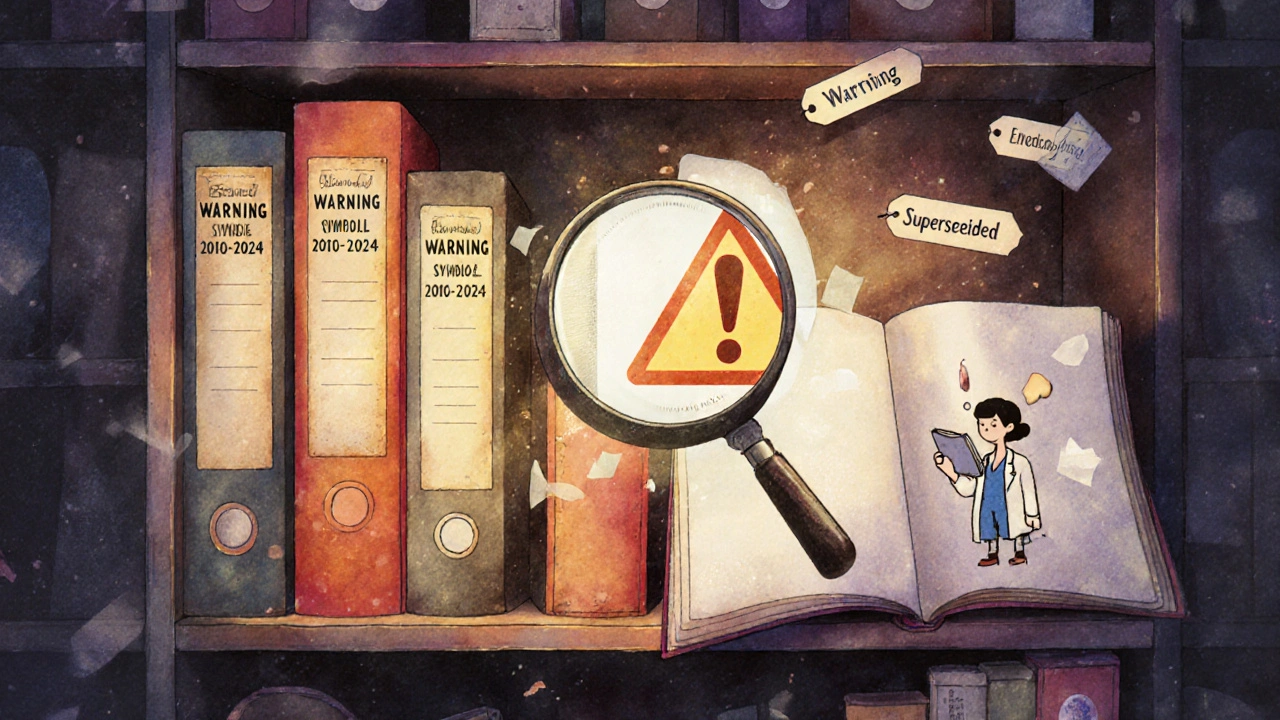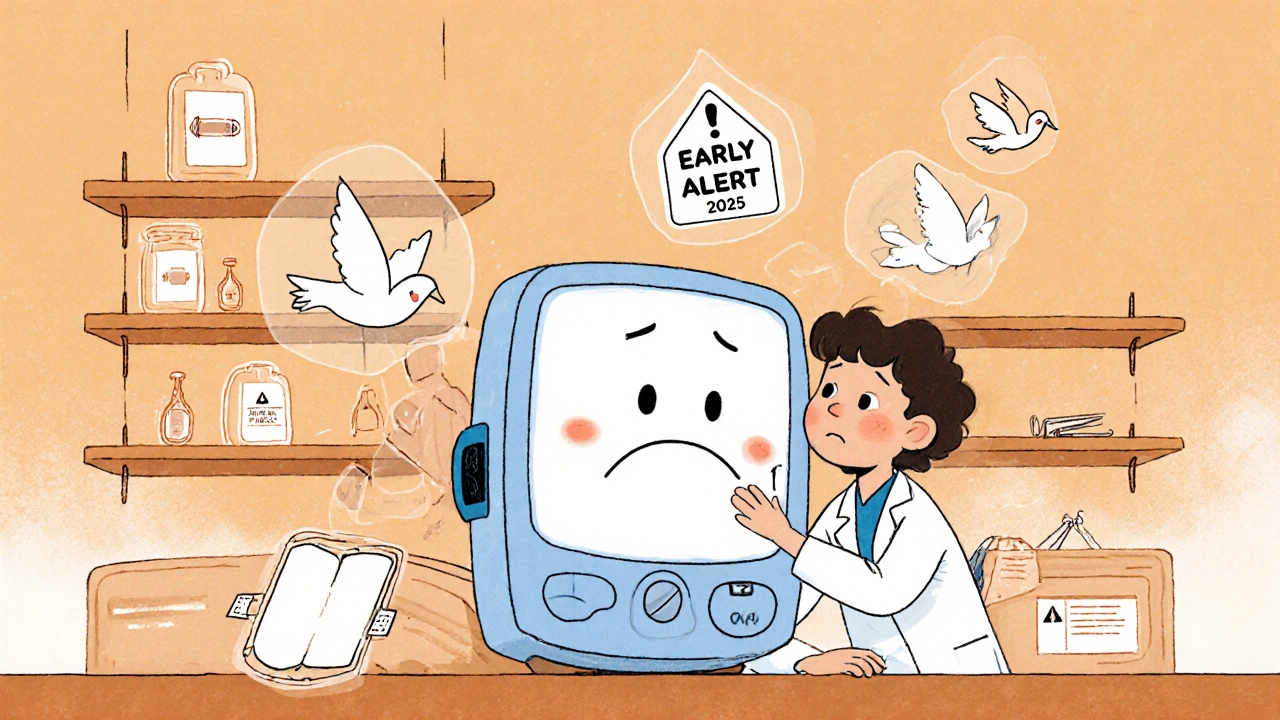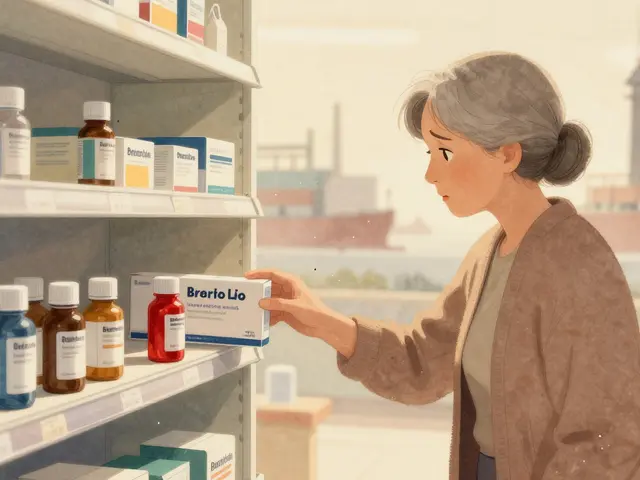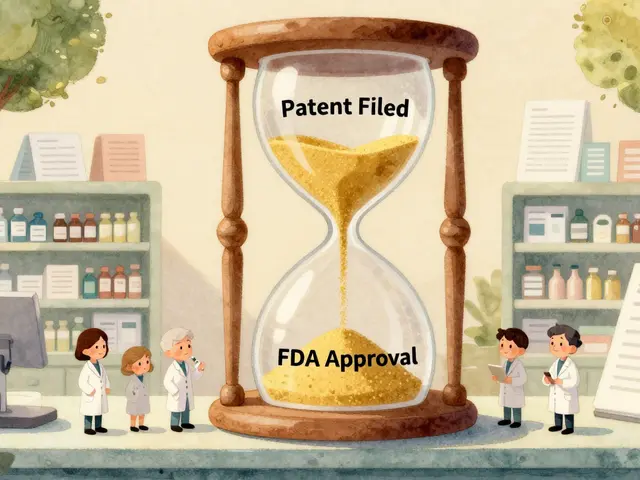
FDA Safety Communications Search Tool
Search FDA Safety Communications
Find safety alerts for drugs, medical devices, and labeling changes in the FDA's official archive.
Search Results
The U.S. Food and Drug Administration (FDA) doesn’t just issue warnings about unsafe drugs and medical devices - it keeps a detailed, public record of every one. If you’re trying to track down a safety alert from 2012 about a specific medication, or need to see how a device recall evolved over five years, the FDA Safety Communications Archive is your only reliable source. Unlike quick news headlines or hospital bulletins, this archive gives you the full story: what was known, when it was known, and how the FDA responded. And it’s all free to access.
What’s in the FDA Safety Communications Archive?
The archive isn’t one single database. It’s three separate but connected systems, each designed for a different type of product. First, there are Drug Safety Communications (DSCs), which cover prescription drugs and biological products. These started being formally archived in 2010, and you can find them year by year up to 2024. If a newer warning came out that replaced an older one, the old version doesn’t disappear - it’s moved to the archive with a note saying it’s been superseded. Then there’s the Drug Safety-related Labeling Changes (SrLC) Database. This one’s more technical. It tracks every single change made to the official safety section of a drug’s label since January 2016. That includes updates to Boxed Warnings, Contraindications, Warnings and Precautions, Adverse Reactions, Drug Interactions, and even Patient Counseling Information. These aren’t just summaries - they’re the exact legal wording the FDA required manufacturers to add. If you’re a researcher or clinician, this database shows you how the understanding of a drug’s risks changed over time, down to the sentence. For medical devices, the FDA has its own system: Medical Device Safety Communications. These include everything from Early Alerts - which flag the most serious device risks before a full recall - to formal safety updates. As of September 29, 2025, the FDA expanded this program to cover all medical devices, not just high-risk ones. That means if a glucose monitor, a pacemaker, or a surgical stapler had a safety issue, you can find the official FDA statement here.How far back does the archive go?
For drug labeling changes, the SrLC Database only starts in 2016. That leaves a gap for anyone studying safety updates before that date. But the FDA has a workaround: the FDA.gov Archive. This tool lets you view old versions of web pages that have been updated or removed. So if a drug safety alert was posted in 2013 and later replaced, you can still pull up the original page as it appeared back then. It’s not perfect - the search isn’t intuitive - but it’s the only way to access pre-2016 DSCs in their original form. For even older records - think 1900s to the 1970s - you need to go offline. The National Archives holds physical and digitized FDA records from 1877 to 1978. These include correspondence, manufacturer reports, and internal memos about food and drug safety. One famous example is Dr. Harvey Washington Wiley’s "Poison Squad" experiments from 1902-1907, which led to the 1906 Pure Food and Drug Act. His findings on fake weight-loss cures and toxic additives are part of that collection. If you’re doing historical research, this is where the real depth begins.How is this different from other health alerts?
The CDC’s Health Alert Network warns about outbreaks - flu, measles, foodborne illness. The FDA’s archive is different. It’s about products that were approved, sold, and later found to be risky. Think of it as post-market surveillance in real time. Unlike the European Medicines Agency (EMA), which doesn’t organize its historical alerts as clearly before 2015, the FDA’s system is built for timeline tracking. Health Canada combines drugs and devices into one list - the FDA keeps them separate, which makes searching more precise. Another key difference: the FDA links its safety communications directly to Drugs@FDA. That means if you’re reading about a safety warning for a drug, you can click through to the original approval documents, application summaries, and even the labeling history. This integration gives you context - you can see not just what changed, but what was originally approved.
What can you actually do with this archive?
If you’re a patient, you might use it to understand why your doctor switched your medication after a recent alert. If you’re a pharmacist, you can verify whether a label change you were told about was officially issued by the FDA. For researchers, this archive is gold. You can study patterns - like how often a drug class gets flagged for liver toxicity, or how long it takes the FDA to update labeling after a study comes out. Lawyers use it in product liability cases. Insurance companies use it to assess risk. One study from 2012 found that not all FDA warnings had the same impact. Some caused doctors to stop prescribing immediately. Others had little effect on prescribing habits. That’s why the archive matters - it lets you see not just the warning, but what happened after. Did prescriptions drop? Did adverse event reports spike? Without the archive, you’d only have the announcement, not the outcome.How to search the archive effectively
Start at the FDA’s Drug Safety and Availability page. From there, you’ll find links to:- Drug Safety Communications (2010-2024) - sorted by year. Click a year to see all alerts from that time.
- SrLC Database - searchable by drug name, active ingredient, or change type (e.g., "Boxed Warning added").
- Medical Device Safety Communications - filter by device type, recall status, or date.
- FDA.gov Archive - enter the URL of the current page to find older versions.

What’s missing - and what’s coming
The biggest gap is pre-2016 labeling data. The SrLC Database doesn’t cover it. But in October 2023, the FDA announced a new resource to help researchers collect historical drug approval data. It’s still being built, but it signals a move toward better long-term access. Another issue: the system is still mostly text-based. There’s no easy way to download all alerts for a drug in one CSV file. No interactive timeline. No alerts-by-risk-level filter. If you’re doing large-scale analysis, you’ll need to scrape data manually or request it through the FDA’s public records office. Still, the system is far more transparent than most global regulators. And it’s growing. The expansion of Early Alerts to all medical devices in 2025 means more warnings will be documented - and archived - than ever before.Need help? Contact the FDA
If you can’t find what you’re looking for, reach out. The Division of Drug Information (CDER) handles all public inquiries. Call them at (855) 543-3784 or (301) 796-3400. Or email [email protected]. They can help you locate archived communications, explain labeling changes, or point you to the right database. They don’t give medical advice - but they know where the records are.Can I find FDA safety warnings from before 2010?
Yes, but not in the modern Drug Safety Communications archive. The formal DSC system began in 2010. For earlier warnings, you’ll need to use the FDA.gov Archive to view old web pages or visit the National Archives, which holds FDA records from 1877 to 1978, including internal reports and correspondence about drug safety.
Is the SrLC Database the same as the Drug Safety Communications?
No. The SrLC Database tracks only official changes to drug labeling - the exact text added to sections like Boxed Warnings or Drug Interactions - since January 2016. Drug Safety Communications are broader public alerts that may include warnings, recommendations, or updates that don’t always result in a labeling change. One can lead to the other, but they’re separate systems.
Do medical device alerts include recalls?
Yes. Medical Device Safety Communications include Early Alerts - which warn of serious risks before a recall is issued - and formal recall notices. Since September 2025, this system covers all medical devices, not just high-risk ones, making it the most comprehensive public record of device safety issues in the U.S.
Why doesn’t the FDA just combine drug and device alerts into one system?
Because drugs and devices have different regulatory pathways, approval processes, and risk profiles. Combining them would make searching harder. A drug’s safety issue might involve liver toxicity after long-term use, while a device issue might involve a battery failure during surgery. Keeping them separate lets users filter more precisely and reduces confusion.
Can I download FDA safety data in bulk for research?
Not directly through the public website. The FDA doesn’t offer downloadable datasets of safety communications. Researchers can manually extract data or submit a formal request under the Freedom of Information Act (FOIA) for bulk data. The new resource launched in October 2023 may eventually offer this, but as of now, it’s still in development.
Are FDA safety communications legally binding?
The communications themselves aren’t laws, but they represent the FDA’s official position. When the FDA requires a labeling change through the SrLC Database, that change becomes legally binding. Manufacturers must update their packaging and prescribing information. Failure to comply can result in enforcement actions, including product seizures or fines.
How often does the FDA update the archive?
The FDA issues new Drug Safety Communications and Medical Device Safety Communications on an ongoing basis - often weekly. The SrLC Database is updated daily as new labeling changes are approved. The archive is automatically updated with each new release, and older entries are preserved, not deleted.






Kevin Wagner
November 13, 2025 AT 15:17This archive is a godsend for anyone who’s ever been burned by a drug that got pulled years later. I used it to trace why my grandma’s blood thinner got switched - turns out there were three subtle label changes between 2014 and 2017 that no one told her about. The FDA doesn’t sugarcoat it, and that’s rare. Most countries bury this stuff. Thanks for the deep dive.
Also, the SrLC Database? Absolute gold. I’ve been scraping it for my research on anticoagulant trends. Took me two weeks to clean the data, but now I’ve got a full timeline of how warnings evolved. No one else has this level of granularity.
gent wood
November 15, 2025 AT 12:00It’s astonishing how much transparency the FDA maintains compared to other agencies. The EMA’s archive is a mess before 2015, and Health Canada’s combined system makes it impossible to isolate drug-specific issues. The fact that the FDA preserves superseded communications - with clear annotations - is a model for global regulators. This isn’t just data; it’s accountability.
I’ve used this archive in court cases. One plaintiff’s attorney tried to claim a warning was ‘new’ when it had been documented since 2012. We pulled the original page from the FDA.gov Archive. Case closed.
Barry Sanders
November 16, 2025 AT 20:20Let’s be real - this whole archive is a glorified paper trail. The FDA waits years to act, then dumps it online like it’s some heroic transparency move. Meanwhile, people are still getting hurt because no one reads these things. And don’t get me started on the ‘Early Alerts’ - they’re just PR spin for devices that should’ve been recalled last year.
You think this helps patients? Nah. It helps lawyers and insurance companies. The real problem? The FDA’s slow as molasses. And you’re praising it?
Dilip Patel
November 18, 2025 AT 17:41USA always think they are best in everything, right? In India we have DCGI and they update alerts in real time, no need to dig through 1000 pages. Also, why need archive? If drug is dangerous, it should be banned, not archived. This is waste of time. And why so many database? One system, one alert, one action - simple. USA overcomplicate everything.
Also, National Archives? 1877? Ha! Who care about old papers? Modern problems need modern solutions. This is like keeping typewriters because ‘they were good once’.
Jane Johnson
November 20, 2025 AT 00:02I find it concerning that the FDA allows the public to interpret safety communications without any contextual guidance. The lack of standardized risk stratification - no color-coded alerts, no severity tiers - leaves patients vulnerable to misinterpretation. Furthermore, the reliance on manual FOIA requests for bulk data is archaic and inequitable. Only well-resourced researchers benefit.
There is no ethical justification for withholding structured datasets. This is not transparency. It is performative accessibility.
Sean Hwang
November 20, 2025 AT 13:37Been using this for years as a pharmacist. If a patient asks why their med label changed, I just pull up the SrLC entry and show them the exact wording they added. No guesswork. Even the old FDA.gov Archive pages work if you know the URL. Google will send you to some blog that says ‘this drug causes cancer’ - but the FDA says ‘risk increased by 1.2% in patients over 70’. Big difference.
Also, the device alerts? Huge. My cousin’s pacemaker got flagged in 2023 - found the exact alert, called the manufacturer, got it replaced. Saved his life. This system works.
Chris Ashley
November 20, 2025 AT 17:43bro why is this even a thing? like i just want to know if my pill is gonna kill me. why do i need to go to 3 different sites, read 10 paragraphs, and click through 5 archived pages? the fda could’ve just made a simple app. ‘red = bad, green = ok.’
also who has time for this? i’m not a lawyer. i’m just trying not to die.
kshitij pandey
November 21, 2025 AT 00:59As someone from India, I’ve seen how drug safety info is often hidden or delayed. This FDA archive is a breath of fresh air. Even if it’s not perfect, at least the info is out there - and preserved. I’ve shared this with my cousins in Mumbai who are studying pharmacology. They’re blown away.
Also, the National Archives part? That’s history in action. Dr. Wiley’s Poison Squad? That’s the real origin story of modern drug safety. We need more of this - not less. Knowledge shouldn’t be locked away.
Brittany C
November 22, 2025 AT 01:02The structural segregation of drug and device communications is methodologically sound, given the divergent pharmacokinetic and biomechanical risk profiles. However, the absence of machine-readable metadata endpoints (e.g., JSON-LD or RDF triples) renders this archive incompatible with modern FAIR data principles. The lack of API access is a critical gap for computational epidemiology.
Additionally, the preservation of superseded communications without versioned identifiers introduces ambiguity in longitudinal analysis. This is not transparency - it’s archival inertia.
Sean Evans
November 22, 2025 AT 14:16OF COURSE the FDA doesn’t let you download data. They’re scared someone will expose how slow they are. 😤 Look at the 2012 study they mentioned - warnings didn’t change prescribing habits? That’s because doctors don’t read this garbage. And you’re telling me this is ‘transparency’? Bro, it’s a graveyard of warnings no one uses.
Meanwhile, people are still getting liver failure from drugs that were flagged in 2011. The FDA doesn’t fix problems - they just archive them like they’re doing their job. 🤡
Anjan Patel
November 23, 2025 AT 06:38THIS IS A SCAM. The FDA says they keep everything - but what about the 2013 recall of those diabetes patches? I looked for it for 3 days. Nothing. They deleted it. I know because I saved the screenshot. And now they say ‘use the archive’? LIES. They only keep what looks good. The real alerts? Buried. Hidden. Gone.
And don’t even get me started on the device alerts. My aunt’s hip implant failed in 2022. The FDA said ‘monitor it’ - but the real alert? Only leaked on a medical forum. The archive? Clean. Perfect. Fake.
Scarlett Walker
November 24, 2025 AT 07:03Just wanted to say thank you for this. I’m a nurse and I use this all the time. Last week a patient asked about her new blood pressure med - I pulled up the 2020 DSC and showed her the exact warning about dizziness in elderly patients. She cried. Said no one ever explained it to her before.
This isn’t just data. It’s trust. And yeah, it’s clunky. But it’s real. Keep doing this.